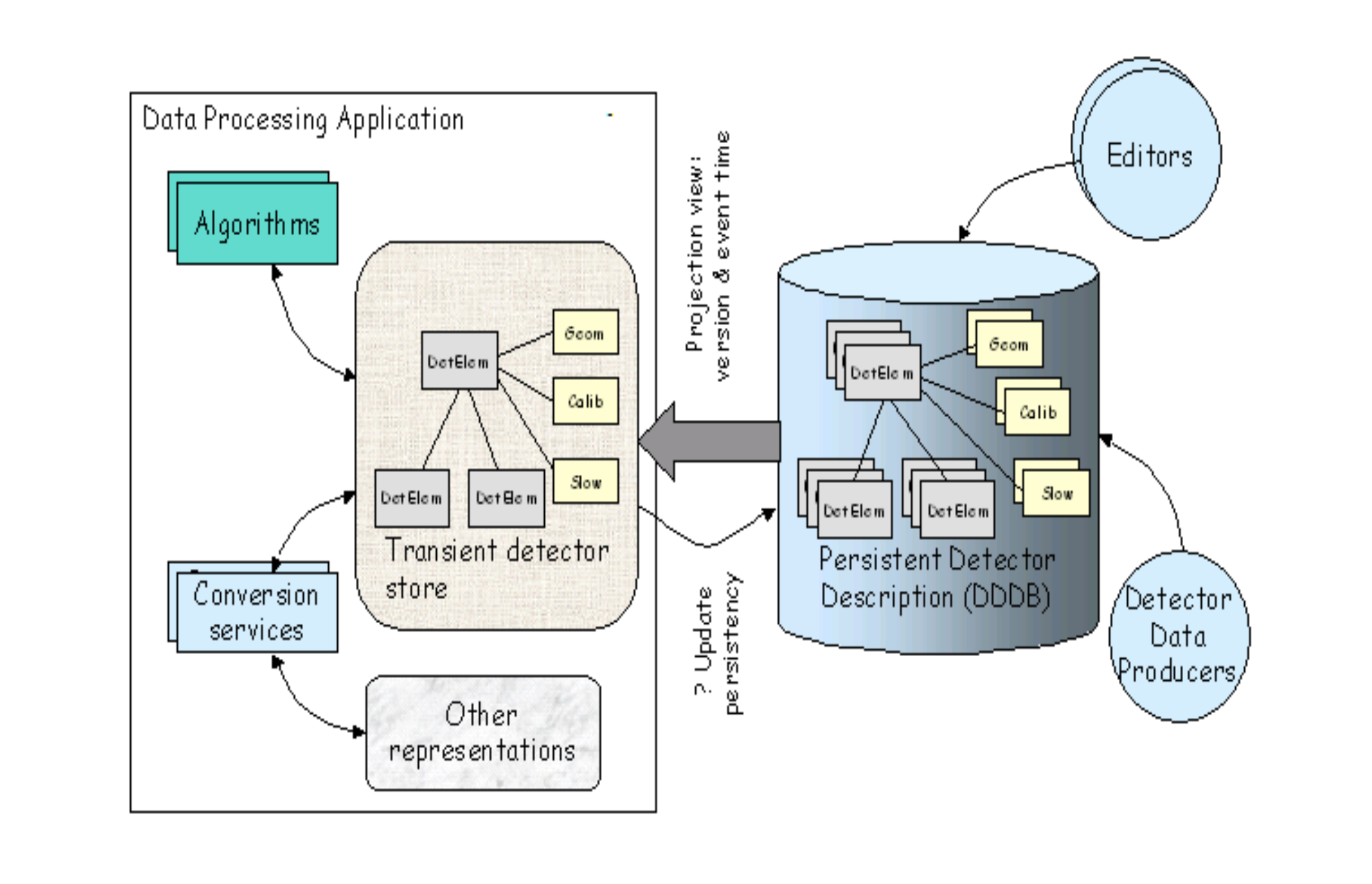9. Detector Description¶
9.1. Overview¶
This chapter is a place holder for documenting how to access the detector description data in the Gaudi transient detector data store. A detector description implementation based on XML exists in the LHCb extensions to Gaudi [Chytracek:2000] but it is not distributed with the framework.
The Gaudi architecture aims to shield the applications from the details of the persistent detector description and calibration databases. Ideally, the detector will be described in a logically unique detector description database (DDDB), containing data from many sources (e.g. editors and CAD tools for geometry data, calibration and alignment programs, detector control system for environmental data) as shown in Fig. 9.1. The job of the Gaudi detector data service is to populate the transient detector data store with a snapshot of the detector description, which is valid for the event currently being analysed. Conversion services can be invoked to provide different transient representations of the same persistent data, appropriate to the specific application. For example, detector simulation, reconstruction and event display all require a geometry description of the detector, but with different levels of detail. In the Gaudi architecture it is possible to have a single, generic, persistent geometry description, from which a set of different representations can be extracted and made available to the data processing applications..
The LHCb implementation of the detector description database describes the logical structure of the detector in terms of a hierarchy of detector elements and the basic geometry in terms of volumes, solids and materials, and provides facilities for customizing the generic description to many specific detector needs. This should allow to develop detector specific code which can provide geometry answers to questions from the physics algorithms. The persistent representation of the LHCb detector description is based on text files in XML format. An XML editor that understands the detector description semantics has been developed.

Fig. 9.1 Overview of the Detector Description model¶
